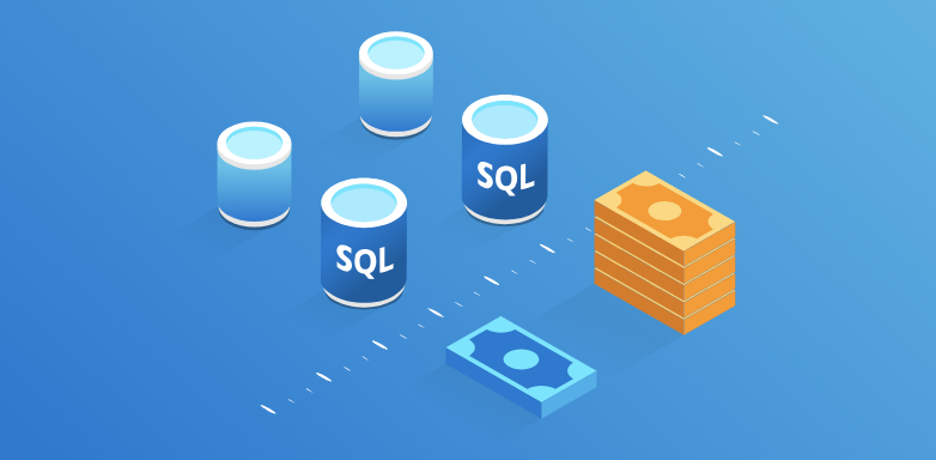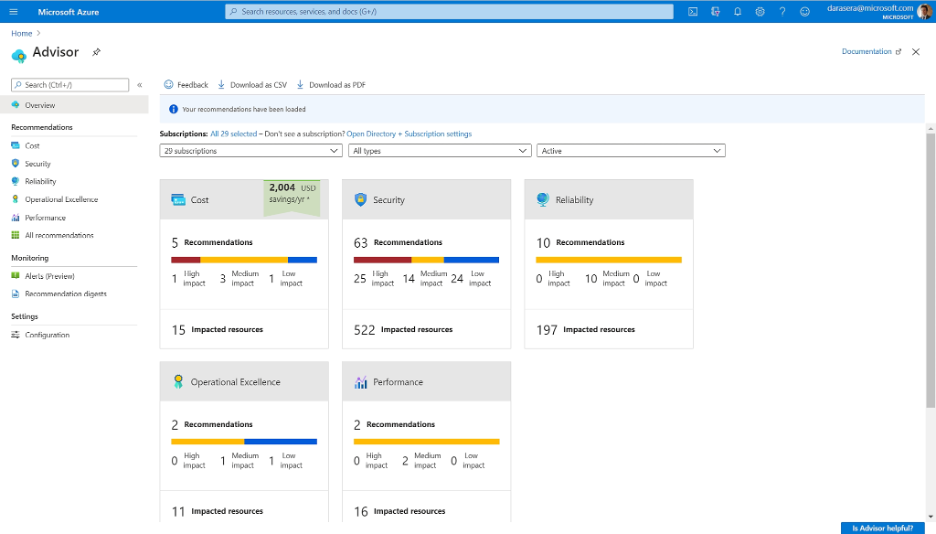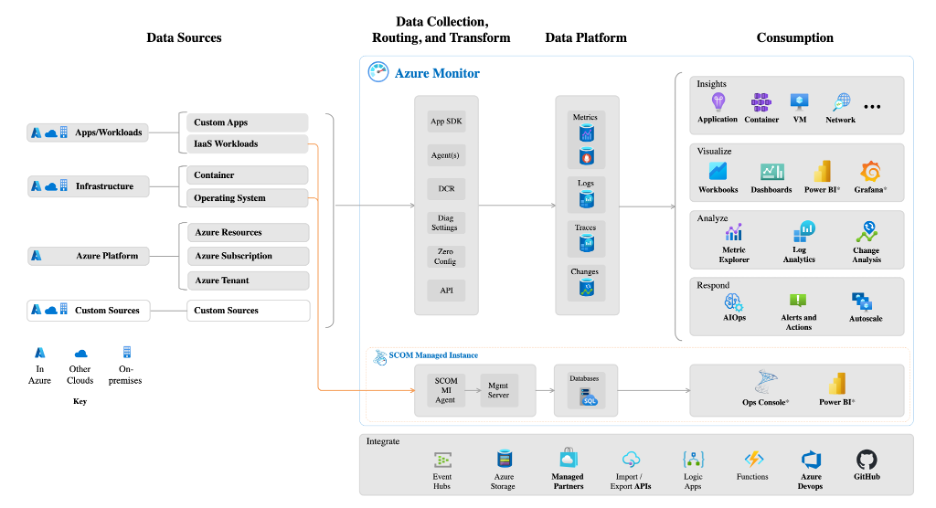While Windows Server and SQL Server are at the heart of many business operations, the push to the cloud is imminent. Migrating to the cloud is no longer a matter of if but when. Enterprises across industries need new ways to optimize costs, improve security, and leverage cutting-edge technology to stay competitive. Microsoft Azure provides a seamless, secure, and cost-effective platform to achieve these goals. By migrating to Azure, businesses can take advantage of the latest innovations in cloud computing. Despite this, some organizations hesitate due to concerns about cost, complexity, and security. In this guide, we will address these concerns and provide a roadmap for a successful migration to the cloud.

Desired Azure Migration Outcomes
Modern organizations need solutions that not only reduce expenses but enhance operational efficiency and flexibility. They desire built-in security measures to ensure their workflows are not interrupted by cyber threats. Additionally, many organizations desire new innovations to stay competitive such as AI integration. Furthermore, with remote teams increasing, hybrid and multi-cloud capabilities are becoming increasingly more attractive.
Key Benefits of Migrating to Azure
Innovation
One of the primary reasons businesses move their Windows Server and SQL Server workloads to Azure is the ability to accelerate innovation. Azure offers a compelling proposition by providing scalable cloud services that integrate seamlessly with existing IT infrastructure. It streamlines IT management, saving enterprises hours of daily overhead through automated management and patching. By integrating Azure AI services, organizations can enhance customer experiences, improve efficiency, and leverage real-time analytics for data-driven decisions. Azure also offers a robust environment that enables organizations to build, deploy, and manage applications with greater agility.
Security
In addition to innovation, Azure addresses security concerns with industry-leading, multilayered security measures. These include advanced threat protection, compliance frameworks, and continuous monitoring. Azure’s security framework helps organizations detect, respond to, and mitigate cybersecurity threats efficiently. Built-in security features work in tandem with Windows Server and SQL Server to provide an extra layer of defense. Windows Server VMs in Azure benefit from rebootless patching, minimizing downtime while ensuring security updates are applied seamlessly.
Disaster Recovery
Beyond security, Azure optimizes operational efficiency by offering high availability and disaster recovery options. With built-in backup and recovery solutions, businesses can ensure minimal downtime in the event of a system failure. Azure’s hybrid cloud capabilities also allow seamless integration with on-premise systems, providing a flexible approach to cloud adoption.
Cost Savings
Azure provides the best total cost of ownership (TCO) compared to other cloud providers. With cost-saving opportunities such as Azure Hybrid Benefit and reserved instances, enterprises can reduce migration expenses by up to 5x compared to AWS. Organizations can also extend security updates for legacy Windows Server and SQL Server versions, eliminating the need for costly on-premise upgrades.
Overcoming Windows & SQL Server to Azure Migration Challenges
Despite its advantages, migrating to Azure comes with challenges that organizations must navigate. High costs, lack of in-house expertise, and security concerns often deter businesses from taking the leap. However, these obstacles can be effectively managed with the right strategies and tools.
For companies worried about expenses, Azure’s hybrid licensing model allows businesses to use existing Windows Server and SQL Server licenses. This significantly lowers migration costs. Additionally, Microsoft offers tools such as Azure Migrate and Azure Advisor, which provide insights into optimizing infrastructure and ensuring cost efficiency.
Another common barrier is the perceived complexity of migration. Organizations often lack the bandwidth or technical skills to execute a seamless transition. Microsoft’s Cloud Adoption Framework and Azure Migrate and Modernize (AMM) program offer step-by-step guidance, automated tools, and expert support to make the process manageable. With proper planning and the right resources, enterprises can move to Azure with minimal disruption.
Azure Use Case Scenarios
Migrating to Azure is not just about cost savings; it also opens up new possibilities for businesses. One such use case is business continuity. Azure’s infrastructure ensures uptime and rapid recovery in the event of a disaster, allowing organizations to maintain seamless operations. Another compelling reason to migrate is the end of support for older servers. Many enterprises still rely on Windows Server 2012 and SQL Server 2012, which are no longer supported by Microsoft as of 2023 and 2022, respectively. Without updates, these servers are reaching the end of their lifecycle. By transitioning to Azure, businesses gain access to extended security updates, ensuring compliance and reducing vulnerabilities.
Additionally, organizations looking to support a remote workforce can benefit from Azure Virtual Desktop. This solution provides secure and scalable virtual desktops that enable employees to work from anywhere without compromising security or performance. Azure also offers AI-powered automation to help businesses optimize workflows and improve efficiency. With predictive analytics, companies can identify issues faster, enabling proactive problem-solving. Businesses running Azure Monitor have reported a 76% improvement in issue detection time.
Real-World Outcomes of Migrating from Windows & SQL Server to Azure
Enterprises that have migrated to Azure report significant improvements in operational efficiency and cost savings. A study conducted by IDC found that businesses running Windows Server and SQL Server on Azure experienced a 406% three-year ROI. This is largely attributed to reduced infrastructure costs, streamlined IT operations, and improved scalability.
Faster decision-making is another key advantage of migrating to Azure. With powerful analytics and AI capabilities, organizations can gain real-time insights that drive smarter business strategies. Automated workflows and predictive maintenance further enhance efficiency, allowing IT teams to focus on innovation rather than routine maintenance tasks.
Moreover, businesses leveraging Azure’s built-in automation tools save hours of daily IT overhead. By reducing manual intervention and optimizing resource allocation, organizations can improve productivity and reduce downtime. Studies show an 87% increase in IT deployment speed and significant enhancements in customer satisfaction by minimizing service disruptions.
Ready to Migrate from Windows Server/SQL Server to Azure?
Microsoft Azure provides a comprehensive solution for enterprises looking to migrate and secure their Windows Server and SQL Server workloads. By leveraging Azure’s advanced security features, cost-effective pricing models, and automation capabilities, businesses can modernize their IT infrastructure without compromising performance or security. With expert guidance, best practices, and robust support programs, the transition to Azure is more accessible than ever. Enterprises can confidently move forward, knowing they are investing in a scalable, secure, and future-proof cloud environment. If you believe it’s time for your business to migrate to Azure, contact our experts today for more information.












